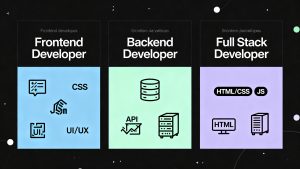The path of backend development has consistently been marked by shifts in abstraction, efficiency, and innovation. Today, the ascent of AI agents signals a fundamental change—enabling unprecedented flexibility and automation in software systems.
Evolution of Programming Abstraction
Historically, backend evolution traversed pivotal milestones: the era of punch cards, integration of external I/O, the rise of programming languages, the proliferation of personal computing, and finally, the interconnected web. Each stage introduced new abstraction layers, separating complex machine instructions from developer intent.
With the digital transformation fueled by the internet, HTTP, and cloud technologies, the abstraction barrier has grown formidable. Modern backend teams now craft logic that navigates not just code, but structured and unstructured data—text, voice, video, and more—across disparate platforms.
The Paradigm Shift to AI Agents
The latest paradigm is driven by AI agent technology. Far from simply automating tasks, AI agents introduce a programming model built on delegation, context, and human-like reasoning. Instead of instructing machines line-by-line, developers now prompt intelligent agents—allowing them to tackle goals with a nuanced, context-aware approach.
This shift empowers subject-matter experts to frame business problems in natural language. AI agents bridge the gap, autonomously planning actions, reasoning through workflows, and interacting via function calls or external APIs.
Core Components of AI Agent Architecture
A modern AI agent stack features several key building blocks:
- A capable language model (often multimodal) that functions as the underlying “brain.”
- Tool integrations, enabling action through APIs or specialized external systems.
- Memory systems, both short- and long-term, to retain vital knowledge and context.
- Configurable roles or personas to align behavior with business objectives.
Such architectures allow agents to operate independently, learn continually, and even collaborate with other agents—resulting in adaptive, scalable backends.
Backend Patterns & Resilience in the Era of AI Agents
Backend development now incorporates established engineering patterns to ensure reliability and observability in agent workflows:
- Resilience designs with retry logic, threshold monitoring, and failovers for agent-driven processes.
- Backend-for-frontend (BFF) entry points that orchestrate multi-agent coordination.
- Microservice architectures expanding to distributed agent meshes, blending modular code with intelligent automation.
- Token caching and optimized data routing for minimal redundant computation and rapid responses.
Observability takes center stage, with teams tracking error rates, retry patterns, and cost footprints—leveraging tools like Spring AI for telemetry and debugging.
Ensuring Accuracy and Security in Agent-Driven Systems
Accuracy in AI-driven backends hinges on robust validation at every stage. Preproduction testing, continuous monitoring, and guardrails for both input validation and output verification are now standard best practices.
Security has also become a top-of-mind concern. The threat of prompt injection—where attackers manipulate agent instructions at runtime—calls for defensive strategies, including:
- Parameterizing all inputs
- Validating and sanitizing data before processing
- Cross-checking outputs against strict success criteria
Cost Optimization for AI-Enhanced Backends
Operating AI agents incurs costs, primarily through token-based pricing for foundation models. Effective cost management requires monitoring token usage, optimizing system prompts, and implementing caching strategies to maximize value per computation.
Developers must now think like efficiency engineers—tuning prompts, restricting model scope, and actively minimizing resource consumption without sacrificing result quality.
Real-World Applications and the Expanding Role of Backend Teams
AI agents have quickly moved into real-world production, orchestrating decisions, automating data flows, and personalizing experiences at scale. Backend teams act as the architects and enablers—selecting when and how to integrate agentic solutions depending on business need and technical maturity.
Adoption need not be all-or-nothing. Hybrid models let organizations blend traditional code with AI assistance, gradually scaling up as confidence and ROI grow.
Read more such articles from our Newsletter here.



